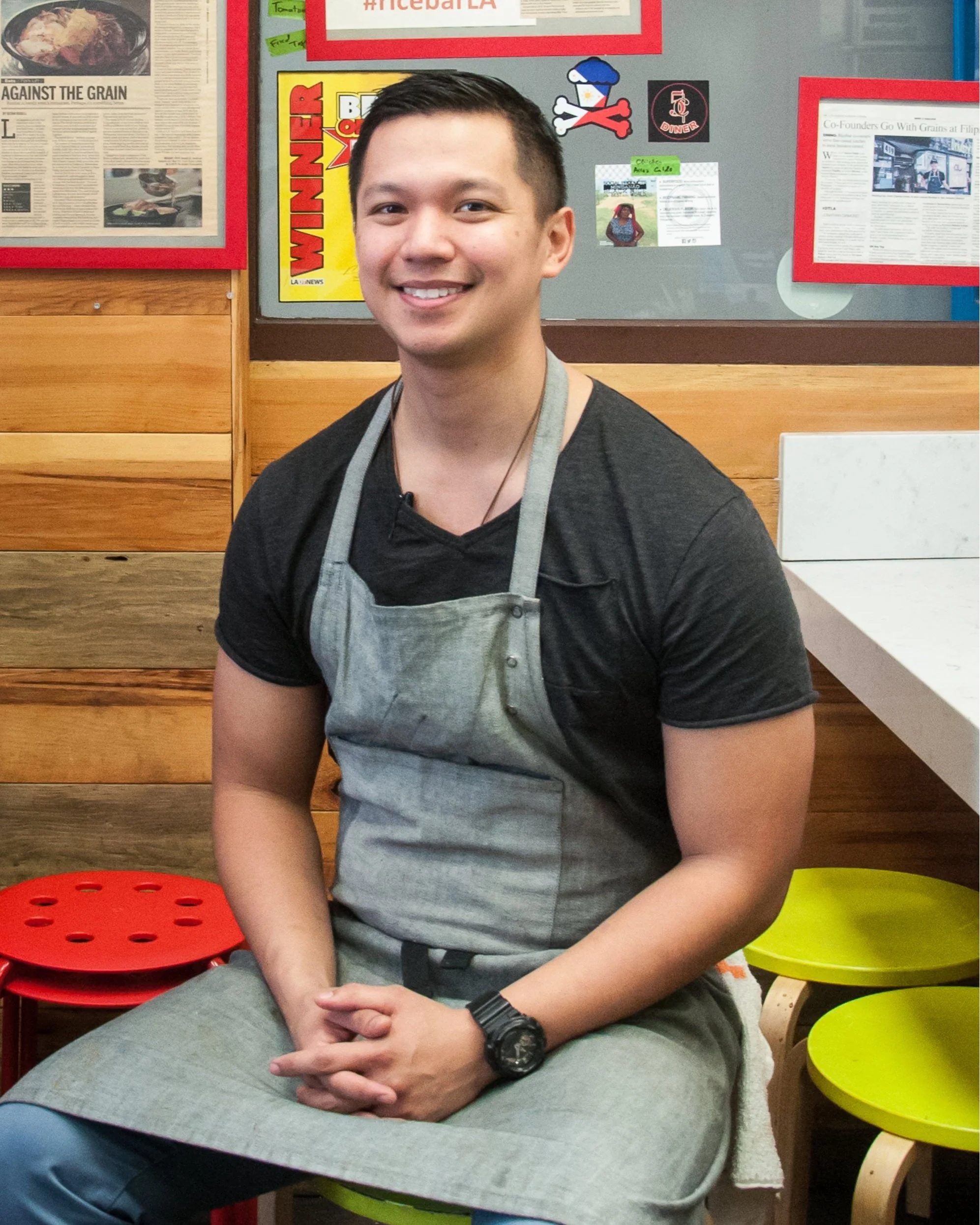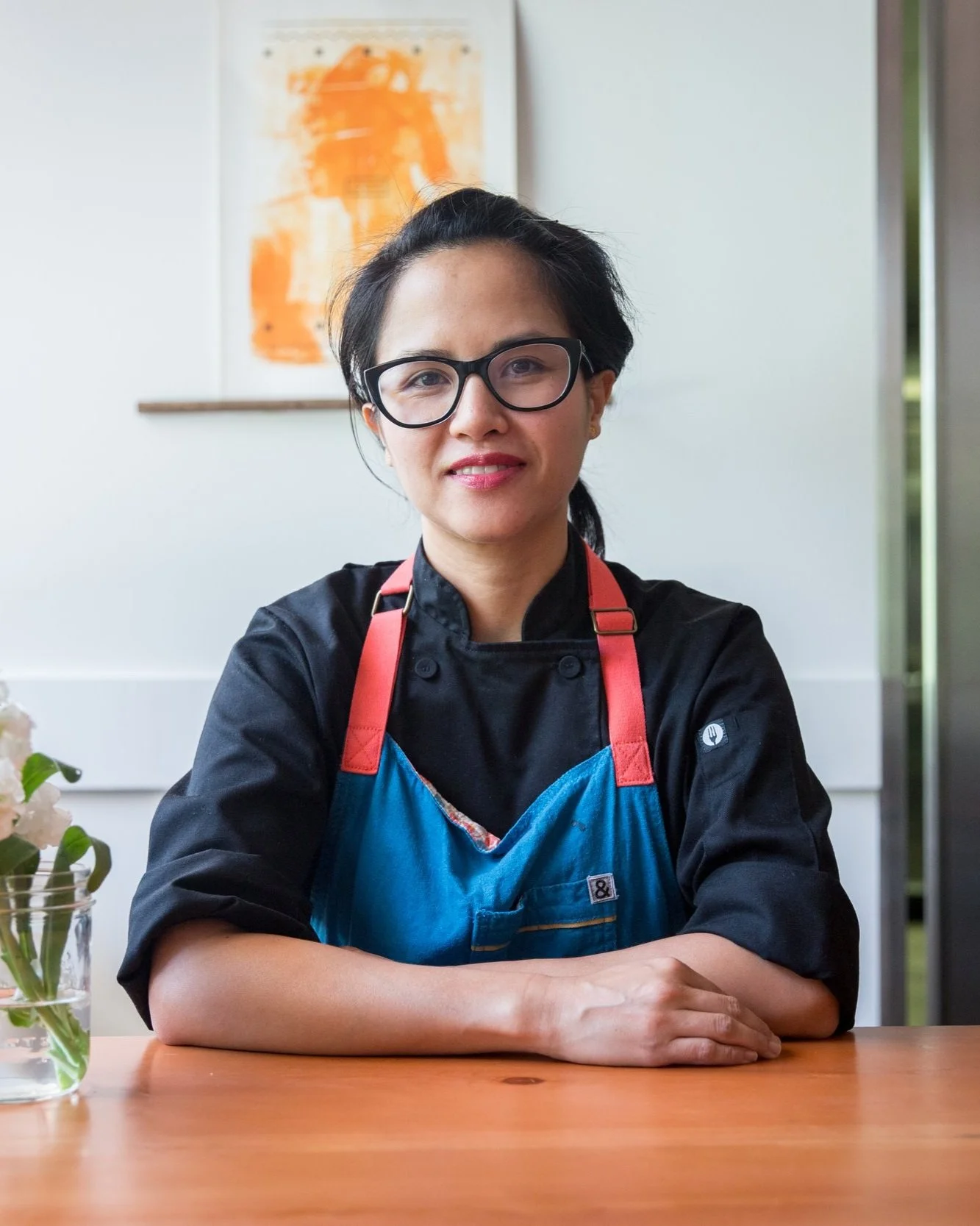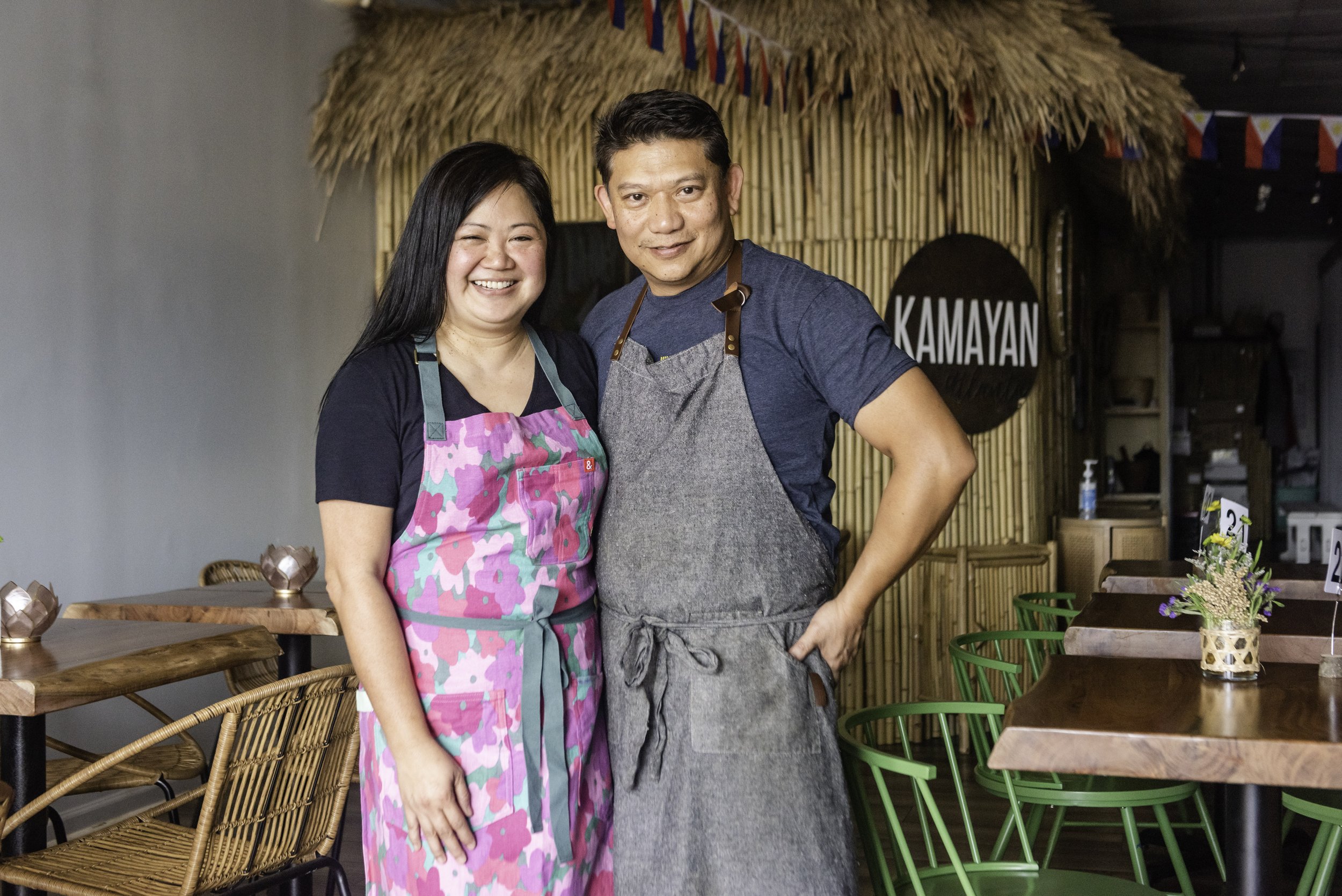Hoy! The Filipinos Are Here To School You
Chefs Isa Fabro, Charles Olalia, and Chad Valencia give a crash course in their cuisine.
Whether or not they’re cooking their culture in a professional setting, Filipino chefs from coast to coast have brought the foodways of a southeast Asian archipelago to a tipping point in the States. Through the lens of three L.A. chefs of Filipino descent—Olalia, Chad Valencia, and Isa Fabro—we present a crash course in a cuisine that most Americans have yet to discover in all its soothing, pungent, humble, kaleidoscopic glory. This course is also a snapshot of one of the most rapidly evolving foods in the country.
Charles Olalia | Nostalgic Filipino
An alum of such kitchens as Guy Savoy, The French Laundry, Coi, and Patina, Olalia authors a menu at RiceBar comprised of six concise dishes, echoing the number of seats in the petite counter service spot. Each bowl contains a specific varietal of heirloom rice, whether it’s in the thick rice noodles in the pancit lulog, the Tinowan Fancy rice served with chicken tinola, or the broken rice in arroz caldo (a combination of jasmine and Tinowan Fancy rices). “I was very conscious to present varied flavors in my bowls,” says Olalia. “The ethos of RiceBar is to present flavors as if we, my family, were the ones eating. I educate [guests] with food memories that are very personal. I can never speak for the whole country, but I can best represent my background and my upbringing.” For the uninitiated, Olalia suggests keeping it simple when attempting arroz caldo (below), “Just make it taste good,” he says. “In the Philippines, it’s omnipresent. The schmaltz is balanced by the calamansi, and it works for the mouthfeel, like lipstick.
Chad Valencia | New Filipino
While RiceBar is a direct (but chef-i-fied) reflection of the food that filled Olalia’s family table growing up, at Lasa in Chinatown the menu is more fluid. “Our family is from a particular region in the Philippines called Pampanga,” says Valencia. “But we’re working with the broad diversity and the progression of Filipino food in America. Our memories are our reference points, but naturally we make adjustments because we're creating Filipino-American food. We’re equal parts Filipino and Californian, a combination of nostalgia and growing up working in California kitchens.”
Valencia worked at Camino in Oakland, staged at Chez Panisse, and was inspired by Sqirl (who isn’t) before going on to open Lasa with his brother Chase, making a splash. His egg noodle dish (below) of calamansi butter, fish sauce-cured egg yolk, and noodles (pancit) sourced from nearby Fungs Village is “hands down one of our most ordered dishes, and also Jonathan Gold’s favorite dish,” says Valencia. “It epitomizes Lasa.” Valenica calls the cured yolk “Filipino bottarga,” with the funk and acid coming from fish sauce (patis). The yolk forms a skin in about five days, and is then dehydrated for two to three days at 110°F.
Isa Fabro | Hybrid Filipino
Born in Canada to Filipino parents and raised in L.A., Fabro cooked Filipino food as well as Detroit-style pizza at Alvin Cailan’s Unit 120 incubator (now home of Lasa). Just as with Olalia and Valencia, it was the Patina and Water Grill vet’s first time cooking Filipino cuisine for a living. “I’m not refining Filipino food for an American audience. What I create is solely based on my experience as a chef,” says Fabro. “I have training in viennoiserie, and the Philippines has centuries-old baking traditions like France. I wanted to combine the two.”
Fabro debuted at 120 with a single doughnut, the coconut malas—her hybrid of the Filipino carioca and the Hawaiian-Portuguese malasada—and from there, built an entire menu. “Filipino cuisine has Spanish, Chinese, Indonesian, Japanese, and American influences. It’s a food born from strife, and yet it retains a dignity.”
Hybridization is kind of Fabro’s modus operandi. Her ensaymadas, which she dubbed Isamadas , “are a hybrid of the Filipino-style brioche rolls and French kouign-amann,” she says. “Ensaymadas are the traditional housewarming gift of the Philippines. Out of respect, you bring ensaymadas.” Fabro is currently working with the Unit 120/Los Angeles Times Food Bowl, spearheading pastry for Filipino Food Fridays and recently co-hosted a screening and discussion of “ULAM.”





